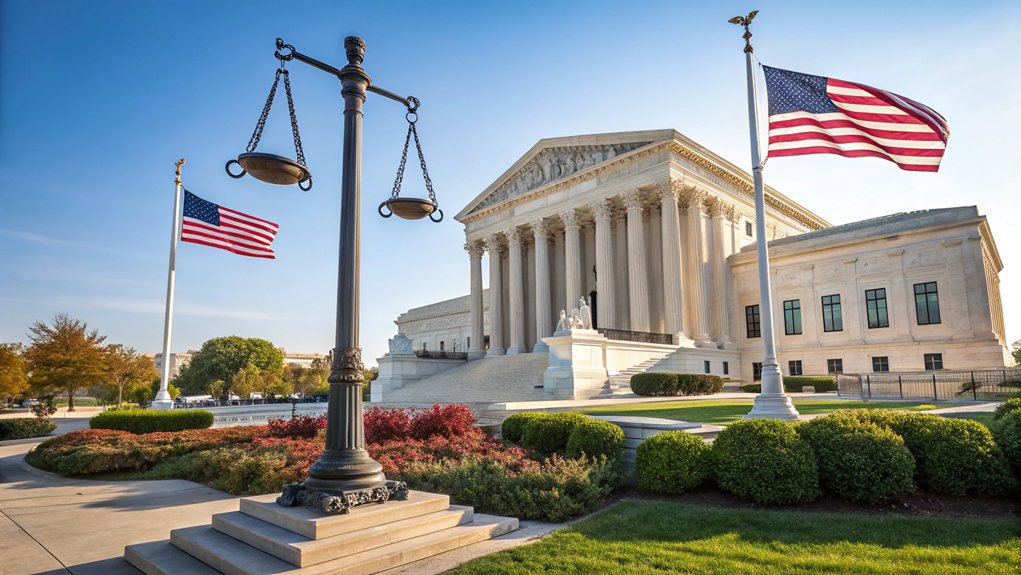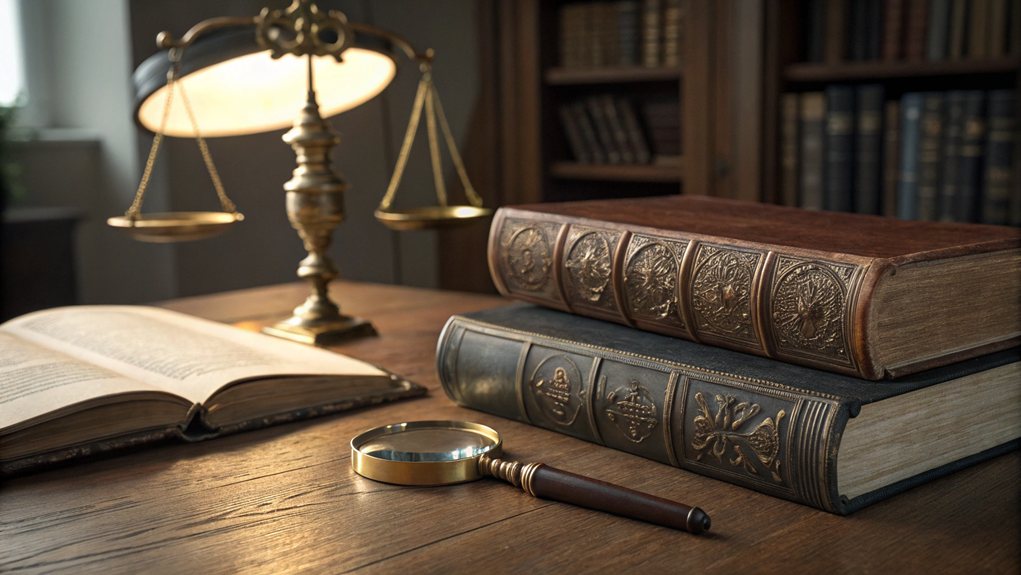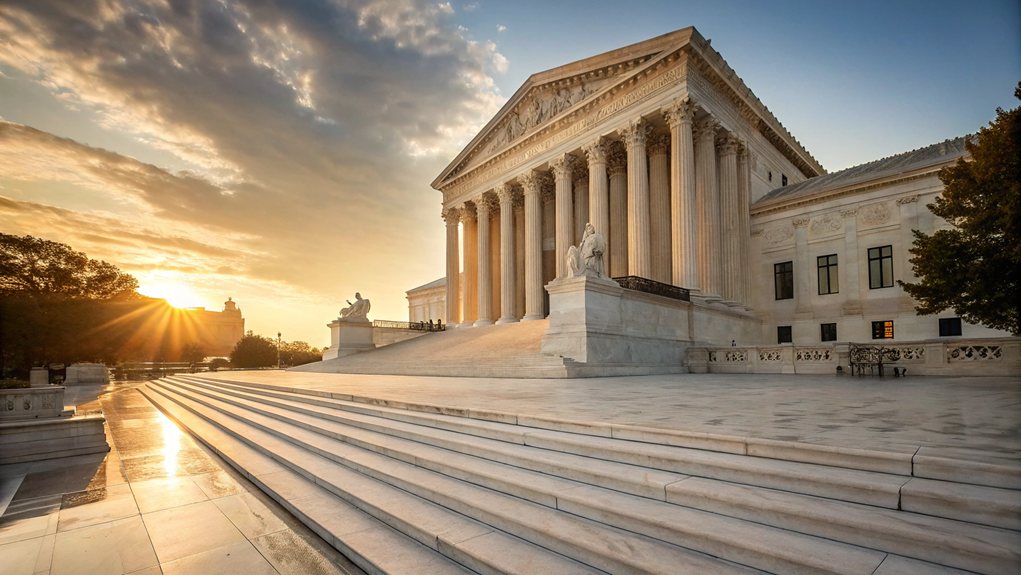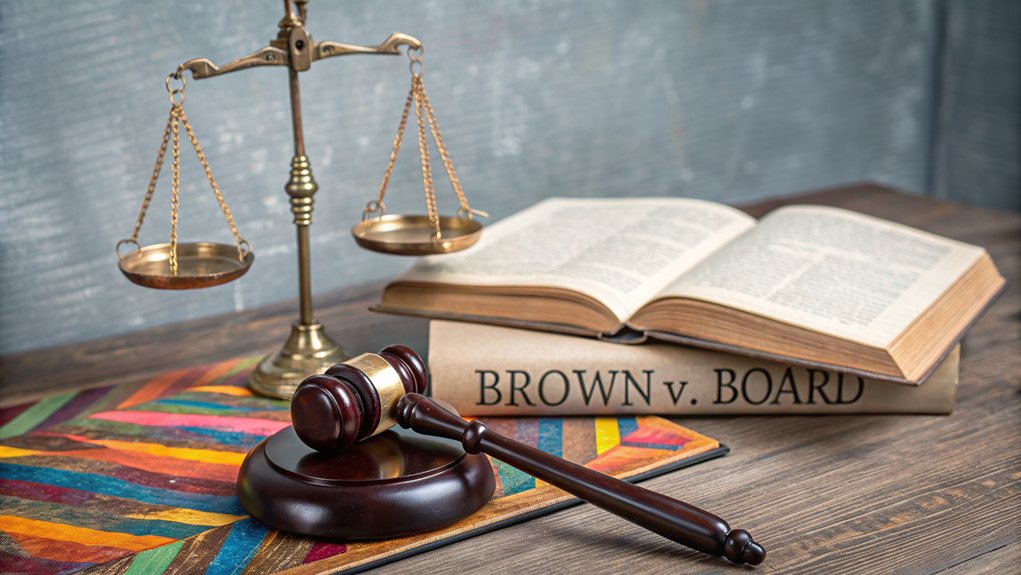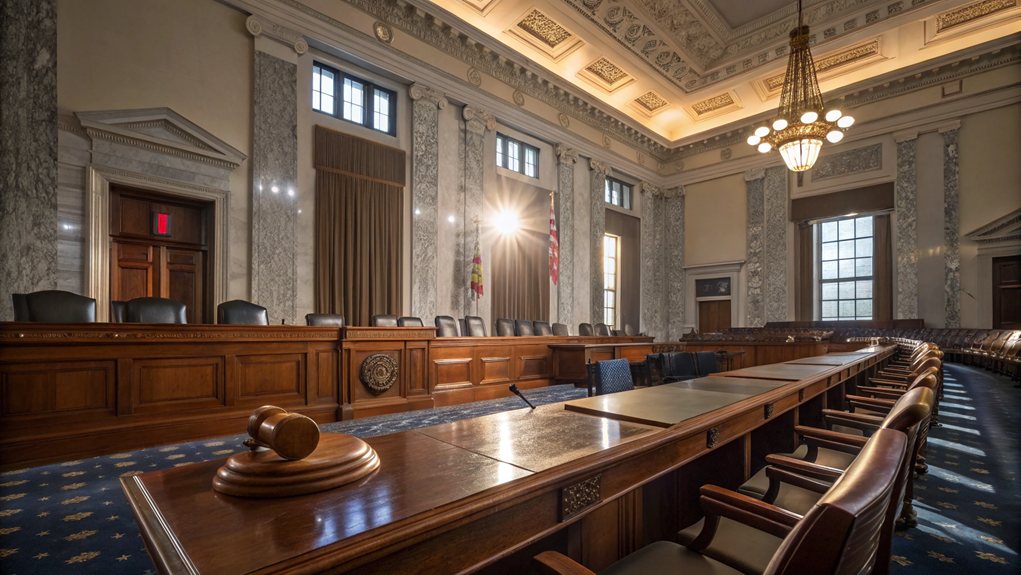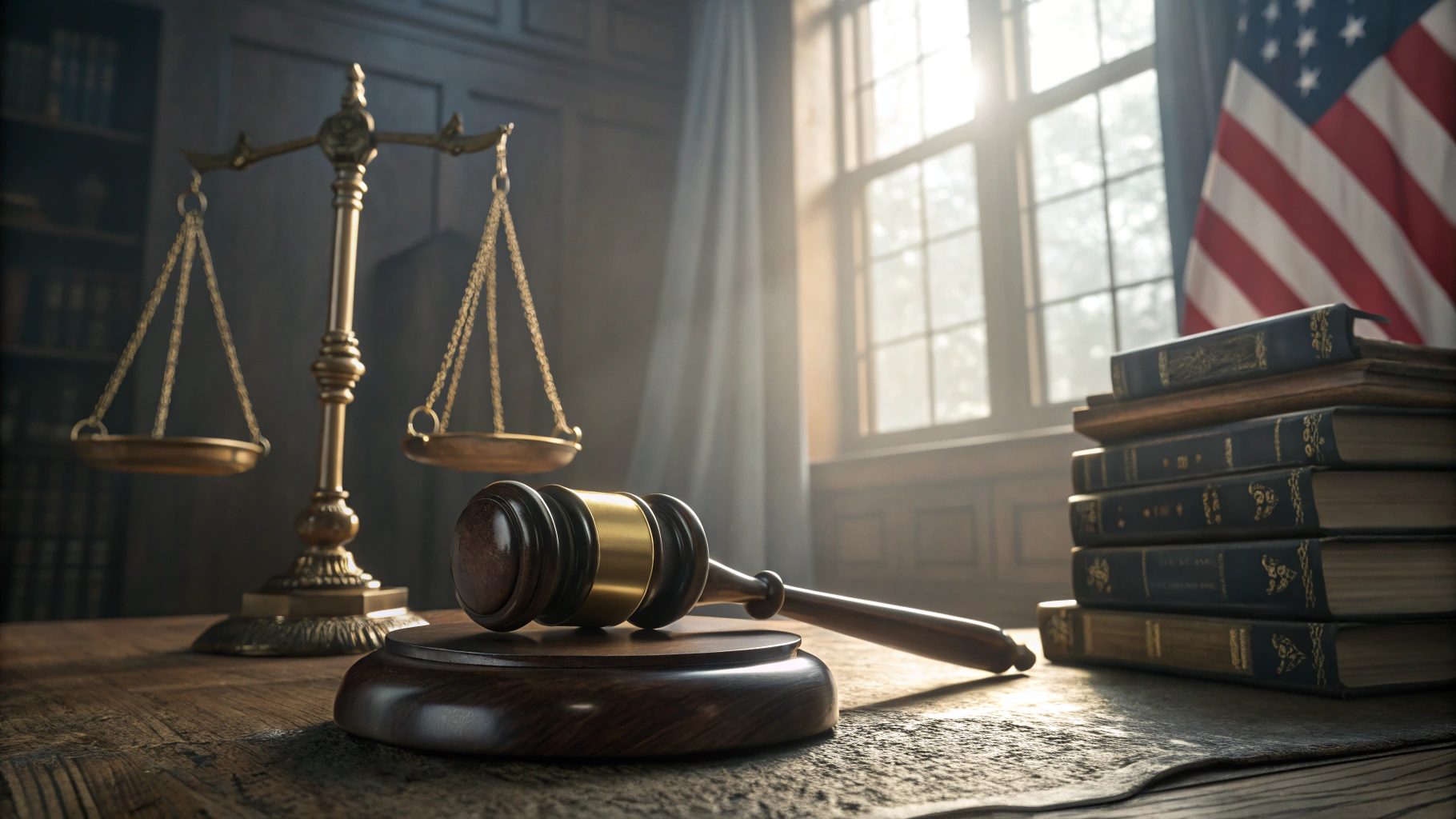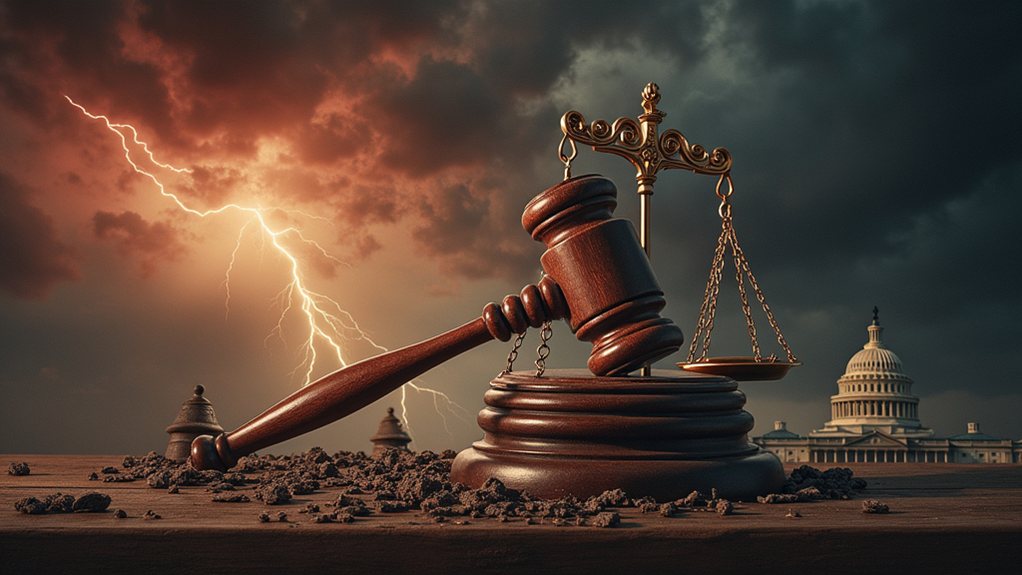Judicial review is the court's way of checking laws against the Constitution. It's like a referee making sure the government plays by the rules. So, if Congress or the President goes rogue, the courts step in. This all started back in 1803 with Marbury v. Madison, a case that set the stage. Different standards of scrutiny come into play based on the situation. Curious about how this power shapes our laws? Stick around for more details.
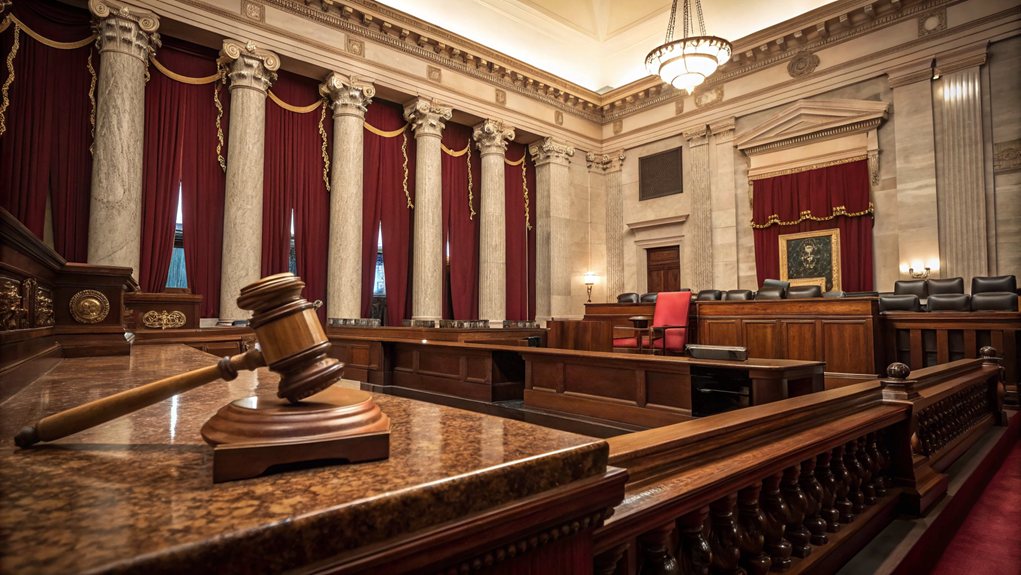
Judicial review—sounds fancy, right? But what does it really mean? In simple terms, it's the power of courts to check if laws and executive actions fit within the Constitution. Yep, that's right. The courts get to play the ultimate referee in the game of government. The whole idea kicked off back in 1803 with the landmark case Marbury v. Madison. That's when judicial review officially strutted into the spotlight.
Now, don't get it twisted—judicial review isn't written outright in the Constitution. Nope, it's inferred from Articles III and VI. It's like that secret menu item at your favorite restaurant. You won't find it on the main page, but it's there if you know where to look. This process is essential because it keeps all branches of government in check. No one gets to run wild without consequences. Judicial review plays a pivotal role in American democracy by safeguarding civil liberties and ensuring laws align with constitutional principles.
Judicial review isn't explicitly in the Constitution; it's like a hidden gem that keeps government powers in check.
So how does it actually work? Well, anyone can initiate judicial review through lawsuits. When courts get involved, they're not just sitting around sipping coffee. They're evaluating cases in district courts, appellate courts, and the big boss—the Supreme Court, which has the final say. The Supreme Court plays an active role in upholding the Constitution as it navigates these important cases. Judicial review reinforces the separation of powers by ensuring that no branch of government exceeds its authority.
Depending on the situation, the courts apply different standards. Think of them as varying levels of scrutiny—Rational Basis, Intermediate Scrutiny, and Strict Scrutiny. Sounds complicated? It can be.
Judicial review's role is all about separation of powers. The judiciary must avoid stepping on the toes of the legislative branch. It's not their job to make laws; they're there to interpret them. It's a bit like a referee who can't throw the ball but can sure call out the fouls.
Over time, judicial review has evolved into a cornerstone of American law. Case after case has shaped its path, ensuring that citizens are protected from unjust laws.
Frequently Asked Questions
How Does Judicial Review Differ From Other Forms of Legal Review?
Judicial review? It's like the big boss of legal reviews. It checks if laws or actions stack up against the Constitution.
Other reviews? They're not so picky. Appeals fix mistakes, cassation looks at the whole shebang, and administrative reviews check if the bureaucracy is playing fair.
Judicial review is the ultimate gatekeeper, while the others are just trying to keep the wheels turning. It's all about the Constitution, baby!
What Role Do Supreme Court Justices Play in Judicial Review?
Supreme Court justices? They're the big shots when it comes to judicial review.
They get to decide if laws actually play nice with the Constitution. It's like a legal referee game. They sift through cases that spark constitutional debates, then vote on them.
If they say, "Nope, that's unconstitutional," it's game over for that law. They even set precedents, shaping future legal battles. Talk about power!
They're basically the ultimate legal gatekeepers.
Can Judicial Review Be Challenged or Overturned?
Judicial review isn't untouchable, but good luck trying to change it!
Sure, you could amend the Constitution, but that's like climbing Mount Everest—harder than it sounds.
Congress might try to pass some laws, but those could end up in court, too.
Some folks even suggest using public votes to overturn decisions.
But, let's be real—most people just want their rights protected, even if it means dealing with a few judges' whims.
How Often Does Judicial Review Occur in the U.S. Legal System?
Judicial review doesn't happen every day. It's more like a rare solar eclipse—important, but infrequent.
The Supreme Court takes on a handful of cases each term, with only a few making the cut for judicial review. So, yeah, it's not your average Tuesday activity.
It's essential for keeping the government in check, but the reality is, it's a selective process, full of drama and controversy.
Welcome to the legal world!
What Are the Historical Origins of Judicial Review in America?
Judicial review in America? It's got roots, folks.
Colonial times set the stage, with the Privy Council flexing its muscle. Then came state courts—like North Carolina's—throwing out laws that didn't vibe with their constitutions.
Fast forward to the Federalist Papers, where Hamilton was all about it. By the time "Marbury v. Madison" rolled around, it was official. Bam! Judicial review became a thing.
And it's been shaking things up ever since.
